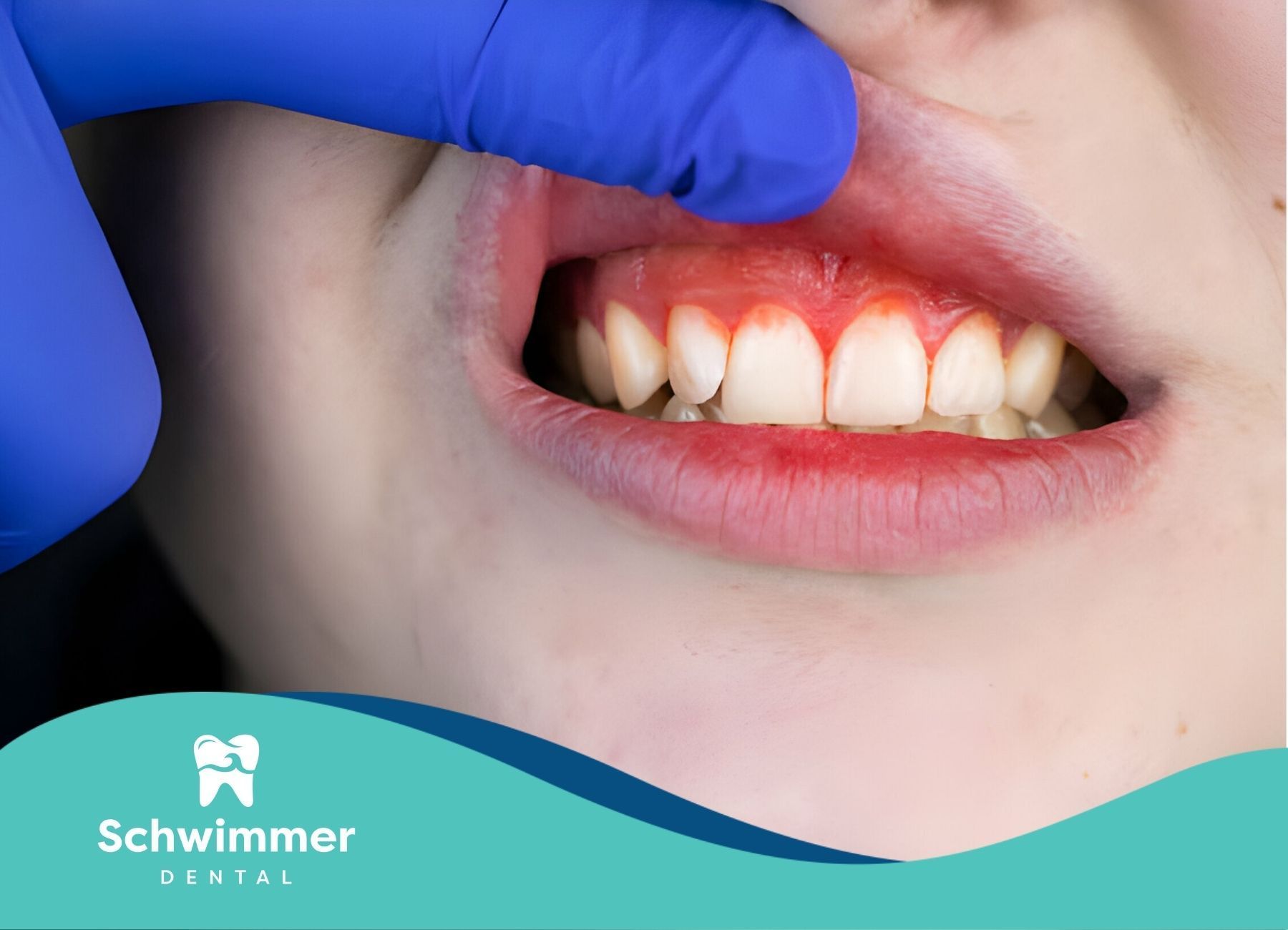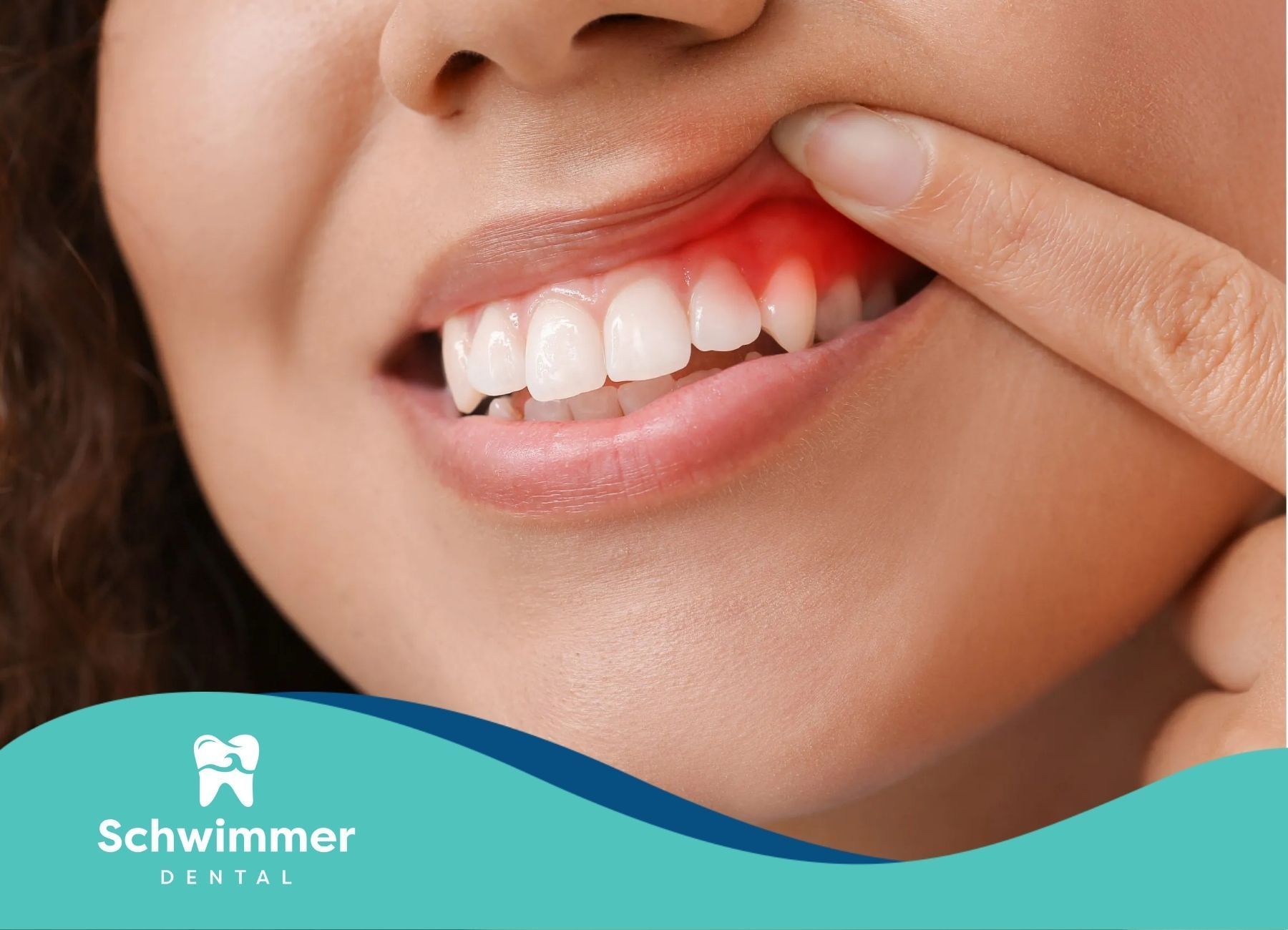Have an appointment? Complete the Intake Form
Are Whitening Strips Safe for Teeth?
Key Highlights
- Whitening strips are a common way to whiten teeth at home.
- They have peroxide-based agents that help remove stains from tooth enamel.
- If used the right way, whitening strips are safe for adults.
- Some side effects might be tooth sensitivity, gum irritation, and enamel erosion.
- It is important to follow the instructions on the product. Talk to a dentist for advice that fits your needs.
Introduction
Want a brighter and more confident smile? Whitening strips are now popular, as they're a simple and cost-effective way to improve oral health and get whiter teeth. But when using any whitening products, it's common to think about their safety and how they might affect your enamel. This blog post will look into the science of whitening strips and answer frequent questions about using them.
Understanding Teeth Whitening Strips
Whitening strips are thin and flexible pieces made from polyethylene or polypropylene. They have a gel made with peroxide on them. These whitening products are designed to target stains on the surface of the teeth. These stains can come from a variety of things like coffee, tea, red wine, and smoking.
The peroxide in the gel goes into the tooth enamel and breaks down the molecules that cause discoloration. This helps to lighten the stains and makes the teeth look whiter. You can easily buy them without a prescription. They are a simple way to whiten your teeth compared to going to a dentist.
Components of Whitening Strips
Whitening strips have two main parts: the strip and the whitening gel. The strip holds the gel in place against your teeth.
The whitening gel usually has either hydrogen peroxide or carbamide peroxide. Hydrogen peroxide helps break down stains very well.
Carbamide peroxide changes into hydrogen peroxide and urea. In this case, hydrogen peroxide is the main ingredient for whitening. The gel is made to stick to your teeth during treatment. This lets the peroxide go into the enamel and do its whitening job.
How Whitening Strips Interact With Teeth Enamel
Tooth enamel is the hard outer layer of your teeth. It acts like a protective shield. When you use whitening strips, the gel inside them has peroxide. This peroxide touches your tooth enamel directly.
The peroxide molecules go into the tiny holes in the enamel. They target the colored compounds that cause stains, called chromogens. This helps break down and change these compounds. As a result, it reduces the stains and makes your teeth look lighter. Over time, this can really help to improve the color of your teeth.
The Science Behind Teeth Whitening
Teeth whitening uses a process called oxidation. The main ingredients in whitening products, such as the strips we are talking about, are oxidizing agents.
When these agents touch stains on your teeth, they break apart the bonds that hold the stain together. This makes the stain lose its color and become invisible. As a result, your teeth look brighter and whiter.
The Role of Peroxide in Whitening Teeth
Both hydrogen peroxide and carbamide peroxide are active ingredients found in whitening strips. They work as bleaching agents. When the peroxide molecules get into the enamel, they target the color-staining substances inside the teeth.
Hydrogen peroxide is a strong agent. It breaks down the bonds of these color-staining substances, making it harder for them to show color. Carbamide peroxide is not as strong as hydrogen peroxide. However, it provides a slower and often gentler way to whiten teeth.
The slow release of hydrogen peroxide from carbamide peroxide may help to make the whitening effects last longer. Still, both types of peroxide are important for removing stains and helping you achieve a brighter smile.
Duration and Frequency of Use for Optimal Results
To see the best results, you should follow the instructions on the product’s packaging. This includes how long and how often to use the whitening strips. Usually, it is best to use them for 15 to 30 minutes at a time.
You may use the strips once or twice a day. This depends on how strong the product is and how white you want your teeth to be. Try not to use the whitening strips too much. Overuse can lead to tooth sensitivity and other side effects.
Stay consistent and stick with the treatment plan. This will help you reach the level of whiteness you want and keep your teeth safe and healthy.
Potential Risks and Side Effects
Whitening strips are usually safe for most people if they follow the instructions. However, there can be risks and side effects. Some side effects are temporary, like tooth sensitivity and gum irritation. Other effects can be more serious, like enamel erosion.
Before using whitening strips, it's key to know these potential risks. Use them carefully to reduce any negative effects on your oral health.
Sensitivity and Gum Irritation
One of the most common side effects of using whitening strips is tooth sensitivity. This can feel like sharp, quick pain when you eat or drink hot or cold things.
The peroxide in whitening strips can make teeth more sensitive by bothering the nerves inside. Luckily, this sensitivity usually goes away fast after you finish the whitening treatment.
Gum irritation can happen too. This often occurs when the whitening gel touches the gum tissue. It can cause redness, swelling, and discomfort. So, it’s really important to put the whitening strips on carefully. Make sure they only touch the teeth and do not overlap onto the gums.
Long-term Effects on Enamel Health
While whitening strips are generally safe for short-term use, concerns remain regarding the potential long-term effects on enamel health. The peroxide-based bleaching agents, while effective in removing stains, can also weaken tooth enamel with excessive use.
This weakening of the enamel, known as enamel erosion, can make teeth more susceptible to cavities, sensitivity, and discoloration. Here’s a breakdown of potential risks:
| Effect | Description |
|---|---|
| Enamel Erosion | Thinning of the enamel, making teeth weaker and more prone to damage. |
| Increased Sensitivity | Heightened sensitivity to hot, cold, or acidic foods and beverages. |
| Tooth Discoloration | Increased susceptibility to staining due to weakened enamel. |
Conclusion
In conclusion, the safety of whitening strips for teeth relies on a few factors. These include how you use them and your dental health. Whitening strips can help improve your smile, but it is important to follow the guidelines. This way, you can avoid problems like enamel damage or gum irritation. It’s a good idea to talk to a dentist before beginning any whitening treatment. They can give you advice that fits your needs. Make oral health a priority and think about your dentist's opinion to ensure that using whitening strips is safe and effective. If you have questions or need help with teeth whitening, contact our experts for a consultation today.
Frequently Asked Questions
How often should whitening strips be used?
The best frequency to use whitening strips varies by product and your dentist's advice. It is important to read the instructions on the product’s packaging. Often, they recommend using the strips daily or twice a day for a certain time. Good oral health and visiting a dentist can help you get a white smile safely and effectively.
Can whitening strips cause permanent damage to teeth?
Using whitening strips is not harmful if you use them the right way. However, using them too much can hurt your enamel for good. When you overuse them, it can cause enamel erosion. This makes your teeth weaker and could lead to sensitivity. To keep your dental health good and protect your enamel, it is important to avoid using whitening strips too often and talk to your dentist.
Need Assistance? We’re Here to Help
We are dedicated to enhancing your dental health and well-being.
We provide personalized dental care solutions for a confident, healthy smile.
Contact us today for Professional Dental Care.

Our caring staff will help you feel relaxed and comfortable in our state of the art office. We respect your time and pledge to deliver prompt service, backed by the latest knowledge, techniques, and technology.
Email: Office@schwimmerdental.com
Tel: (848) 294-2385
Fax: (732) 899-3347
Address: 1115 Arnold Ave,
Point Pleasant, NJ, 08742
Schwimmer Dental – Website by CWS


